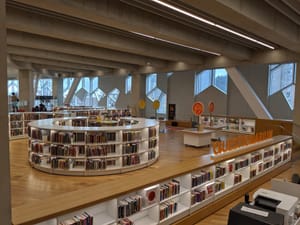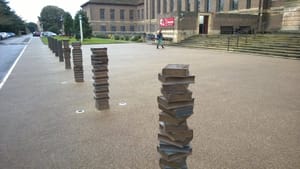The library co-evolves with the community it serves, and we need to remember that those communities also change, which in turn change the services they need from the library. This is readily apparent as learning, research and records management, for example, are also increasingly carried out in a digital environment. One interesting consequence of this is the changing way in which we view the library collection, and the type of attention that we give to different collection areas.
To illustrate the point, here are three pictures which look at changing library collections against two-dimensional matrices.
We came up with the ‘collections grid‘ to think about the different types of attention different types of material call forward. It categorizes materials along two dimensions, and has received quite a bit of attention. The dimensions we chose were uniqueness (whether an item is in more or fewer collections) and stewardship (the degree to which an item is formally managed within a curatorial environment). Here is a version.
The second is from a recent ALA presentation by Michael Keller – Institutional repositories: strategic considerations [ppt]. He looks at resources with axes of longevity and compass (individual to institutional). Here is the picture he presented.
The third is from a presentation by Paul Conway. He looks at resources within a field defined by structural integrity and the right to manage intellectual property. Here is a version of his picture.
One of the interesting things about this approach is that it emphasises that we are no longer dealing with the conventional linear supply chain. We are dealing with a web of relationships and flows between many players. This is one reason why I like the scholarly flow picture we developed for the OCLC environmental scan, based on prior work of Liz Lyon. It emphasises the flow and reuse of materials throughout the research and learning enterprise, rather than a point to point transmission. Here is a version.
Share
More from LorcanDempsey.net



